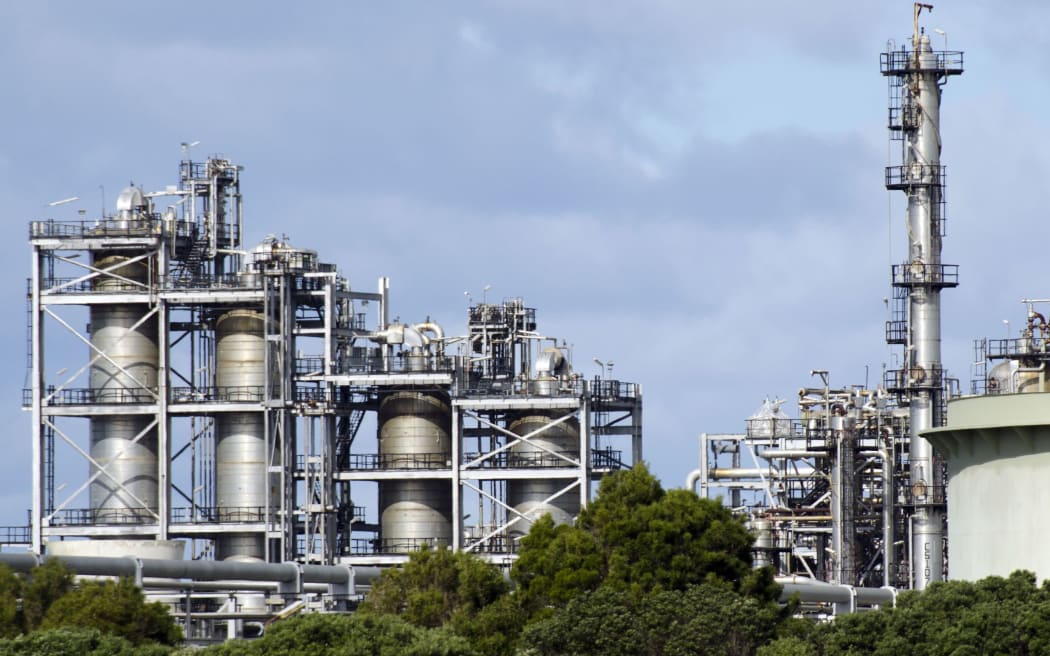Navigation for News Categories
Former Marsden Point refinery.
Photo: 123rf.com
The possible production of sustainable aviation fuel at the former Marsden Point refinery has taken a step forward with further work on the feasibility of such a project.
Channel Infrastructure and Australia’s Fortescue Future Industries (FFI) will look in more detail at the financial, engineering, and commercial issues of turning green hydrogen into green jet fuel.
If it were to proceed, a new production facility would be needed, possible making as much as 60 million litres of sustainable aviation fuel (SAF), which would be stored at the former refinery and then piped to Auckland Airport.
Channel’s chief executive Rob Buchanan said the “pre-feasibility” study would take 12 to 18 months to explore the greater use of the old refinery site and helping the aviation sector decarbonise.
“During the next phase we will work with FFI on developing the commercial model for Channel, including how we leverage our strategic asset base, available land at Marsden Point and our pipeline to Auckland.”
Last month, Air New Zealand joined two firms to explore the prospect of making SAF in this country.
Channel Infrastructure has previously been cool about production of SAF and also a prospective solar farm adjacent to the old refinery.
“We want to pursue opportunities that have the potential to contribute to New Zealand’s wider decarbonisation efforts and energy transition, and bring the potential for new jobs for Northlanders,” Buchanan said.
He said “there was a lot of water to go under the bridge” before the parties got to the stage of contemplating investment decisions.
‘First mover’ advantage sought
FFI chief executive Mark Hutchinson said global aviation had a UN-backed goal of net-zero carbon by 2050, with SAF a key factor in achieving that.
“This project would position FFI as a first mover in the SAF market, which we believe is a valuable global market for FFI. For New Zealand, domestic SAF production would provide a greater degree of fuel security and support development of the local green hydrogen industry.”
He said new renewable energy generation projects would be needed for such a plant and FFI had approached Mercury, Manawa Energy, Top Energy and Yinson Renewables about supply.
Buchanan also noted that overseas authorities were looking to mandate SAF as part of the decarbonisation of the industry.
In April, the European Union moved to bring in a SAF mandate that would require 2 percent SAF use by 2025 and 70 percent by 2025.
The pre-feasability study is being supported by the government’s Energy Efficiency and Conservation Authority, however, the government scrapped a planned biofuels mandate for vehicles as part of its bonfire of policies at the start of the year.
Get the RNZ app
for ad-free news and current affairs


>>> Read full article>>>
Copyright for syndicated content belongs to the linked Source : RNZ – https://www.rnz.co.nz/news/business/493235/production-of-sustainable-aviation-fuel-moves-to-next-step















![[News] Japan Develops 10nm Nanoimprint Technology, with Potential to Tackle EUV Bottleneck – TrendForce](https://earth-news.info/wp-content/uploads/2025/12/329851-news-japan-develops-10nm-nanoimprint-technology-with-potential-to-tackle-euv-bottleneck-trendforce-360x180.jpg)
















